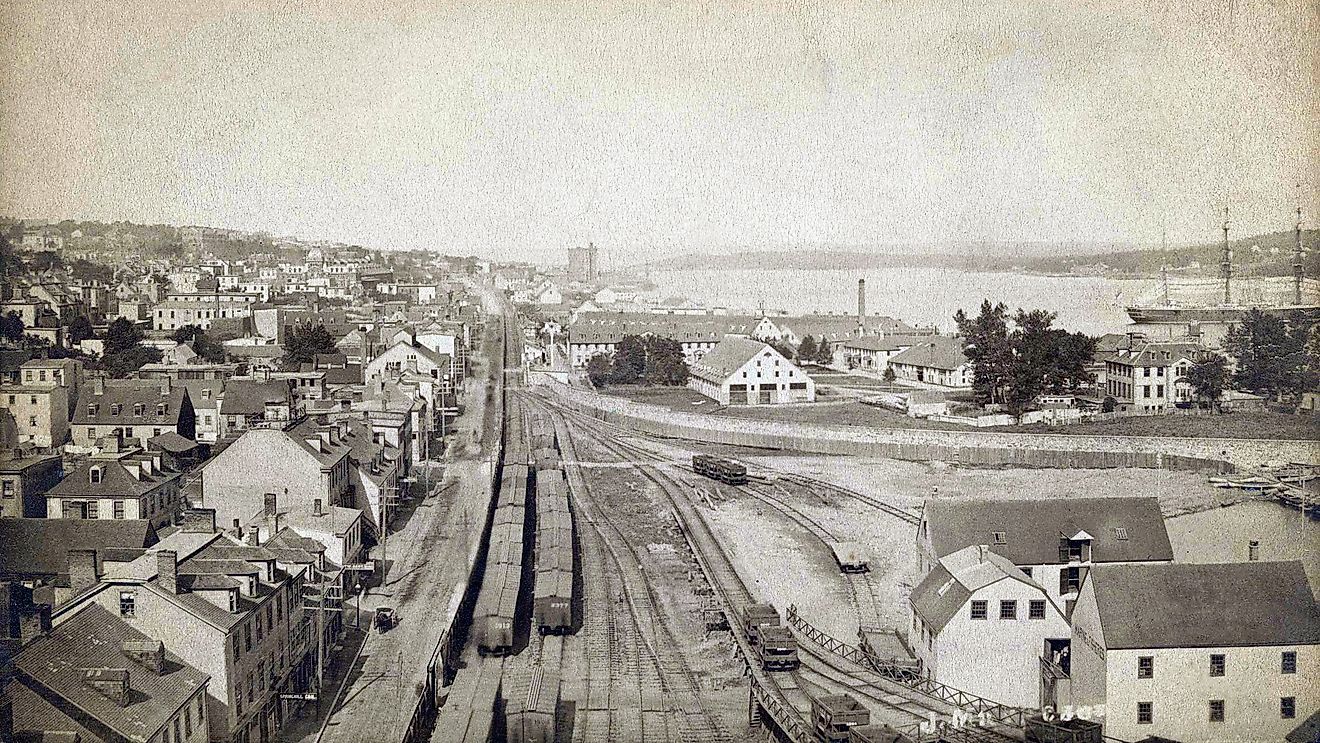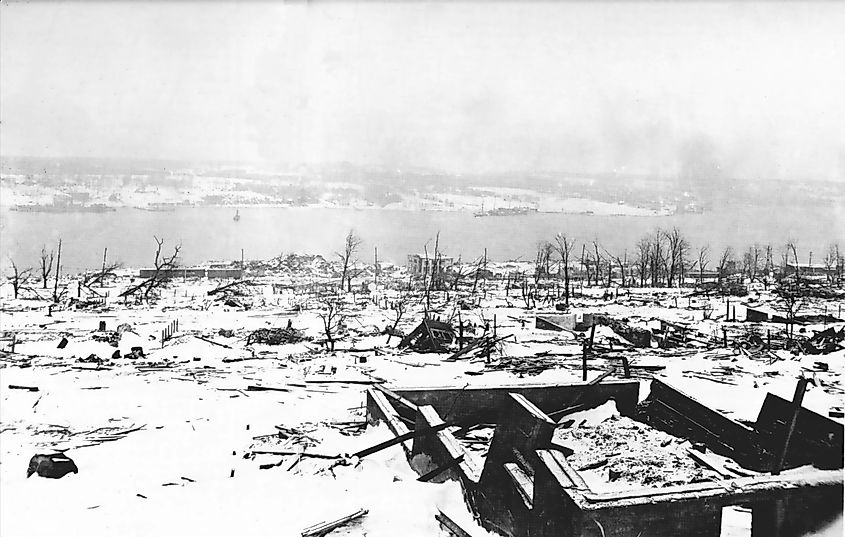A City Destroyed: The Halifax Explosion

The Halifax Explosion was a marine disaster that occurred on December 6, 1917, in Halifax, Nova Scotia, Canada. The tragedy happened when a French cargo vessel, known as the SS Mont-Blanc, carrying highly explosive cargo collided with a Norwegian ship, the SS Imo, in the Narrows, a channel connecting the Bedford Basin to Halifax Harbour. The fire on SS Mont-Blanc ignited the explosive cargo, creating a massive explosion that devastated the people living in Richmond District, Halifax. The fire, blast, debris, or collapsed buildings resulted in more than 2,000 deaths and 9,000 injuries.

The Disaster
The SS Mont-Blanc, which carried picric acid, guncotton, benzole fuel, and explosive TNT, arrived from New York on December 5, 1917, captained by Aime Le Medec. The French vessel wanted to join a slow convoy in Bedford Basin, preparing to depart for Europe, but it was late and did not enter the harbor because the anti-submarine nets used to protect against German U-boats attacks had been raised. Ships carrying explosive cargo were not allowed in the port, but with the threat of German submarines, officials had to let the vessel enter the harbor. The SS Imo had traveled from the Netherlands to Belgium through New York to carry relief supplies for Belgium on December 3, 1917, and was delayed at the harbor for two days while waiting for fuel.
Navigation in and out of the Bedford Basin requires ships to pass through the Narrows, and these vessels were expected to use the right side of the channel as they passed oncoming vessels. SS Imo was signaled to leave in the morning and entered the narrow channel faster than the port’s speed limit in an attempt to save time and nearly collided with another vessel, the Stella Maris. SS Imo was moving quickly along the Dartmouth side of the harbor to avoid colliding with other ships leaving the harbor.
The SS Mont-Blanc was the second ship to enter the harbor and headed towards Bedford on the Dartmouth side. Captain Mackey spotted the SS Imo when she was about 0.75 miles away and fired one blast to signal to the other captain that the Imo was in his path and that he had the right of passage, but the Imo responded with two blasts. To avoid a collision, Mackey ordered his crew to stop the engine and swing slightly to the starboard side, but the captain of the Imo had also halted the engine, and their momentums pushed both ships directly onto each other. The collision itself was not severe but resulted in a fire aboard SS Mont-Blanc. The fire grew out of control and caused an explosion approximately twenty minutes later.

The explosion destroyed all structures within a radius of 0.5 miles. The disaster produced a powerful blast wave that radiated from the point of the explosion at 3,300 feet/second at a temperature of 5,000°C. White-hot iron-metal debris fell upon Dartmouth and Halifax. The barrel of Mont-Blanc’s forward gun melted away and was thrown about 3.5 miles. The shock wave from the explosion traveled at almost 23 times the speed of light. A tsunami formed as a result of the explosion and carried SS Imo to the shores of Dartmouth. The Tsunami also wiped out the Mi’kmaq First Nations community, which had lived in the Tufts Cove region for generations. The blast killed 1,600 individuals immediately and other 400 people later while injuring a total of 9,000.











